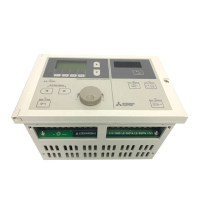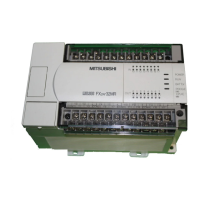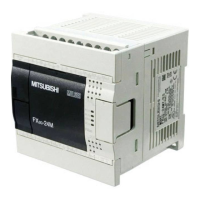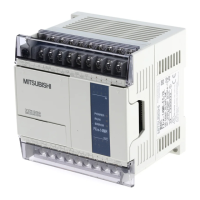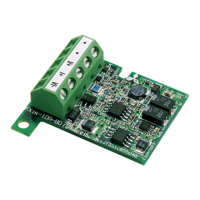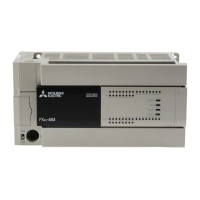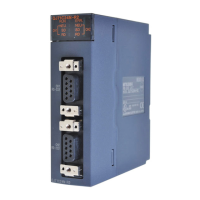233
CHAPTER 5 DEVICES
5
5.2 Internal User Devices
5.2.6 Annunciator (F)
5.2.6 Annunciator (F)
The annunciator (F) is an internal relay which can be effectively used in fault detection programs for user-created
system. Whenever an annunciator is turned on, SM62 turns on and the anuunciator number is stored in SD62 to
SD79. By monitoring SD62 to SD79, the system can be checked for error and failure.
When F5 is turned on, the corresponding annunciator number is output to the outside.
(1) Turning on the annunciator
Use either of the following instructions.
(a) SET F instruction
Annunciator turns on only on the leading edge of an input condition. Even if the input condition turns off, the
annunciator is held on. Using many annunciator numbers can shorten scan time more than using the OUT F
instruction.
(b) OUT F instruction
Since the processing is performed for every scan, the scan time is longer than the case of using the SET F
instruction.
If the annunciator is turned on with any instruction other than SET F and OUT F (for example, the MOV instruction), the
same operation as the internal relay (M) is performed. The ON information is not stored in SM62, and annunciator numbers
are not stored in SD62 and SD64 to SD79.
Ex.
Ex.
SM62
SD62
SD63
SD64
SD65
SD79
0
0
[Fault detection program]
Outputs number of
the annunciator that turned on.
Annunciator ON detection
OFF ON
0 5
0 1
0 5
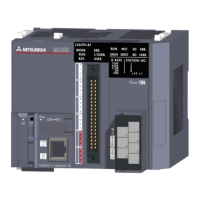
